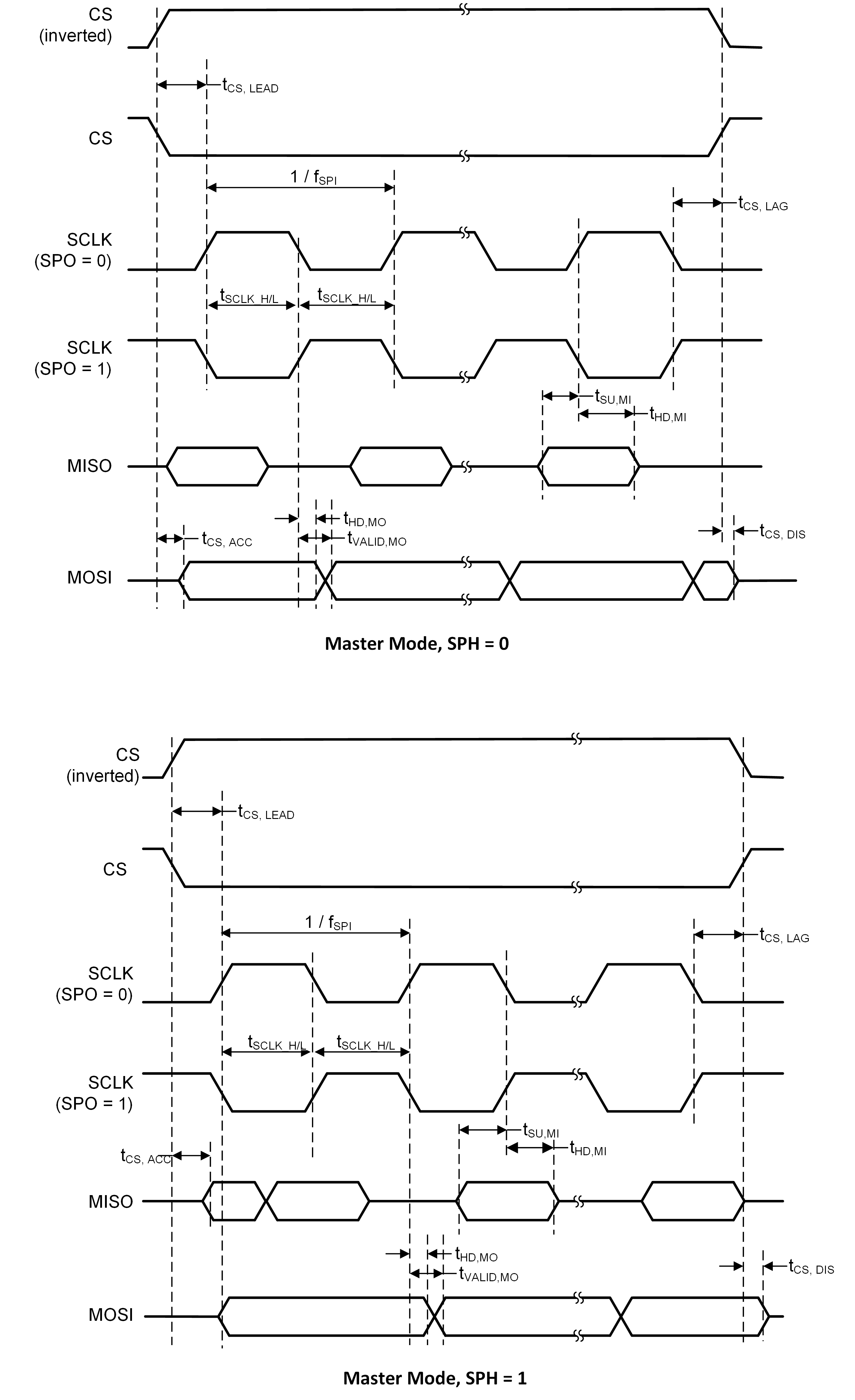SWRS267B December 2022 – December 2023 CC1354P10
PRODUCTION DATA
- 1
- 1 Features
- 2 Applications
- 3 Description
- 4 Functional Block Diagram
- 5 Revision History
- 6 Device Comparison
- 7 Terminal Configuration and Functions
-
8 Specifications
- 8.1 Absolute Maximum Ratings
- 8.2 ESD Ratings
- 8.3 Recommended Operating Conditions
- 8.4 Power Supply and Modules
- 8.5 Power Consumption - Power Modes
- 8.6 Power Consumption - Radio Modes
- 8.7 Nonvolatile (Flash) Memory Characteristics
- 8.8 Thermal Resistance Characteristics
- 8.9 RF Frequency Bands
- 8.10 861 MHz to 1054 MHz - Receive (RX)
- 8.11 861 MHz to 1054 MHz - Transmit (TX)
- 8.12 861 MHz to 1054 MHz - PLL Phase Noise Wideband Mode
- 8.13 861 MHz to 1054 MHz - PLL Phase Noise Narrowband Mode
- 8.14 Bluetooth Low Energy - Receive (RX)
- 8.15 Bluetooth Low Energy - Transmit (TX)
- 8.16 Zigbee and Thread - IEEE 802.15.4-2006 2.4 GHz (OQPSK DSSS1:8, 250 kbps) - RX
- 8.17 Zigbee and Thread - IEEE 802.15.4-2006 2.4 GHz (OQPSK DSSS1:8, 250 kbps) - TX
- 8.18 Timing and Switching Characteristics
- 8.19 Peripheral Characteristics
- 8.20 Typical Characteristics
- 9 Detailed Description
- 10Application, Implementation, and Layout
- 11Device and Documentation Support
- 12Mechanical, Packaging, and Orderable Information
Package Options
Mechanical Data (Package|Pins)
Thermal pad, mechanical data (Package|Pins)
Orderable Information
8.18.4.3 SPI Master Mode Timing Diagrams
 Figure 8-1 SPI Master Mode Timing
Figure 8-1 SPI Master Mode Timing